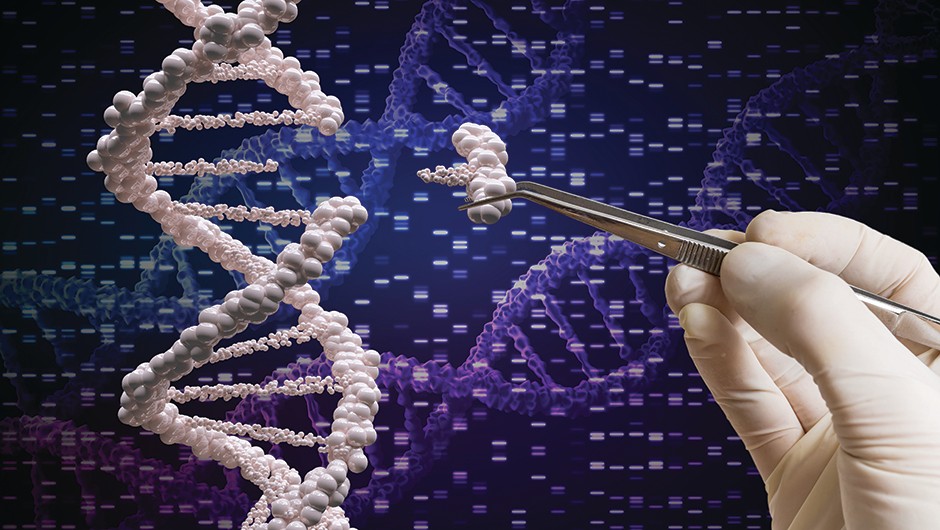Dysgraphia and ADHD can be difficult conditions for children to live in. If your child has been diagnosed with one or both of these disorders, you may be feeling overwhelmed and unsure of where to turn. This guide is written specifically for parents of children who have been diagnosed with ADHD or dysgraphia. We will discuss the symptoms of each disorder, as well as strategies for managing them. We hope that this guide will help you to provide your child with the best possible care.
Contents
What Is Dysgraphia?

Dysgraphia is a neurological disorder that affects a person’s ability to write. Although it can occur in people of all ages, it is most commonly diagnosed in children. Dysgraphia can make it difficult to produce legible handwriting, and can also impact a person’s ability to spell words correctly.
Dysgraphia is thought to be caused by a dysfunction in the part of the brain that controls fine motor skills. This can make it difficult for the affected individual to coordinate the muscles in their hands and fingers when writing. Dysgraphia is often comorbid with other conditions, such as attention deficit hyperactivity disorder (ADHD).
What Is ADHD?
Attention deficit hyperactivity disorder (ADHD) is a neurodevelopmental disorder that affects both children and adults. Individuals with ADHD may have difficulty paying attention, controlling impulsive behaviors, or being excessively active. ADHD symptoms can interfere with school, work, and social interactions.
ADHD is thought to be caused by a combination of genetic and environmental factors. It is believed that ADHD affects around 5 percent of school-aged children worldwide.
ADHD is not a behavioral problem, nor is it caused by bad parenting. ADHD is a real, neurobiological disorder that can impact every area of an individual’s life. With the proper diagnosis and treatment, however, many people with ADHD go on to lead successful lives.
Similarities Between Dysgraphia and ADHD

The relationship between dysgraphia and ADHD is complicated. Some experts believe that the two conditions are linked, while others believe that they are separate but often co-occurring conditions. It is believed that about 30 to 50 percent of children with dysgraphia also have ADHD.
There are a few theories about why dysgraphia and ADHD might be linked. One theory is that both conditions are caused by problems with executive functioning skills. Executive functioning skills are the cognitive skills that help us plan, organize, and complete tasks. Another theory is that problems with fine motor skills may contribute to both dysgraphia and ADHD.
Another theory of why dysgraphia and ADHD might be linked is that both conditions may be caused by a delay in the development of the brain’s motor system. This theory is supported by research that has found that children with dysgraphia often have delays in the development of their fine motor skills.
It is also worth noting that there are some similarities between the symptoms of dysgraphia and ADHD. For example, both conditions can cause problems with task completion, impulsivity, and distractibility. However, it is important to remember that each condition has its own unique set of symptoms and not all children with dysgraphia will have ADHD, and not all children with ADHD will have dysgraphia.
Signs of Dysgraphia and ADHD

There are many signs of dysgraphia and ADHD, and they vary from person to person. Some common signs include:
Trouble Staying Focused on One Task
One of the most common signs of both ADHD and dysgraphia is trouble staying focused on one task. This can manifest in several ways, such as:
- Appearing not to be listening
- Forgetting things
- Trouble following instructions
Hyperactivity
Another sign of both ADHD and dysgraphia is hyperactivity. This can manifest in several ways, such as:
- Fidgeting or squirming in the seat
- Running or climbing excessively
- Excessive talking
Impulsivity
One of the most common signs of ADHD is impulsivity. This can manifest in several ways, such as:
- Blurting out answers before the question has been completed
- Difficulty waiting for a turn
- Interrupting or intruding on others
Trouble With Organizational Skills
Another common sign of both ADHD and dysgraphia is trouble with organizational skills. This can manifest in several ways, such as:
- Losing things
- Forgetting to turn in homework
- Poor time management skills
- Trouble completing tasks
Trouble With Motor Skills
Another sign of both ADHD and dysgraphia is trouble with motor skills. This can manifest in several ways, such as:
- Awkward or clumsy handwriting
- Difficulty using scissors
- Trouble tying shoelaces
Dysgraphia vs. ADHD
So how do you know if your child has dysgraphia or ADHD? There are a few key differences between the two conditions that can help you make a diagnosis:
Dysgraphia is a learning disability that affects writing skills. It can manifest in several ways, such as poor handwriting, trouble spelling, and difficulty composing written sentences. ADHD, on the other hand, is a neurobehavioral disorder that affects attention, hyperactivity, and impulsivity.
Dysgraphia is usually first diagnosed in elementary school when a child begins to learn how to write. ADHD can be diagnosed at any age, but it is usually first diagnosed in childhood or adolescence.
Another difference is that ADHD is often comorbid with other conditions, such as anxiety or depression. Dysgraphia, on the other hand, is not typically comorbid with other disorders.
These differences help make a diagnosis, but it is important to note that there is some overlap between the two conditions. For example, both can cause trouble with writing and spelling. If you are unsure whether your child has dysgraphia or ADHD, it is best to consult with a doctor or educational psychologist who can administer a comprehensive assessment.
Common Reasons For Dysgraphia and ADHD

There are common reasons for having both ADHD and Dysgraphia. Some of these reasons are:
Genetics
One of the main reasons for having both ADHD and Dysgraphia is genetics. If you have a family member that has either of the disorders, then you are more likely to have them as well. Some of these disorders can be passed down from parent to child.
Sometimes genetics may also play a role in causing ADHD and Dysgraphia. Certain genes have been linked to these disorders. If you have these genes, then you may be more likely to develop one of the disorders.
Brain Structure
Another reason for having both ADHD and Dysgraphia is because of the way your brain is structured. Certain parts of the brain may be different in people with ADHD and Dysgraphia. This can affect the way information is processed in the brain. Also, the way the brain functions can be different in people with these disorders.
Another reason for having both ADHD and Dysgraphia is neurological disorders. This means that there is something wrong with the way that your brain functions. This can be caused by a variety of things, such as head injuries, strokes, or even just how your brain developed.
Environmental Factors
There are also environmental factors that can play a role in causing ADHD and Dysgraphia. These factors can include things like:
- Exposure to toxins: This can include things like lead or other heavy metals. Exposure to these toxins can cause problems with the way information is processed in the brain.
- Stress: Stress can also cause problems with the way information is processed in the brain. This can lead to problems with focus and concentration.
- Trauma: Traumatic events can also cause problems with the way information is processed in the brain. This includes things like abuse, neglect, or a major life event.
- Abuse: Also, if you have been abused, this can lead to problems with focus and concentration.
How Do ADHD and Dysgraphia Affect The Brain?
ADHD and Dysgraphia both affect the brain in different ways. These disorders can cause problems with the way information is processed in the brain. Also, the way the brain functions can be different in people with these disorders.
- People with ADHD may have problems with:
- Attention: People with ADHD may have trouble paying attention. They may be easily distracted or have trouble focusing on one task.
- Hyperactivity: People with ADHD may also be hyperactive. This means they may feel restless and have trouble sitting still.
- Impulsivity: People with ADHD may also be impulsive. This means they may act without thinking or have trouble controlling their impulses.
- People with Dysgraphia may have problems with:
- Fine motor skills: People with Dysgraphia may have trouble with fine motor skills. This means they may have trouble writing or holding a pen correctly.
- Coordination: People with Dysgraphia may also have trouble with coordination. This means they may have trouble putting their thoughts into words or writing in a straight line.
- Perceptual skills: People with Dysgraphia may also have trouble with perceptual skills. This means they may have trouble understanding what they see or hear. They may also have trouble organizing information.
Common Treatment Methods of ADHD and Dysgraphia

There are many different treatment methods for ADHD and Dysgraphia. Some common treatments include:
Medication: Medication can be used to help with the symptoms of ADHD and Dysgraphia. Stimulant medications are often used to treat ADHD. These medications can help with attention and hyperactivity. Non-stimulant medications may also be used to treat ADHD. These medications can help with impulsivity and aggression.
Behavioral therapy: Behavioral therapy is often used to treat ADHD and Dysgraphia. This type of therapy can help people learn how to manage their symptoms. It can also help people learn new skills, such as paying attention or controlling impulses.
Occupational therapy: Occupational therapy is often used to treat Dysgraphia. This type of therapy can help people with fine motor skills and coordination. It can also help people with perceptual skills and organization.
Parent training: Parent training is often used to treat ADHD and Dysgraphia. This type of training can help parents learn how to manage their child’s symptoms. It can also help parents learn new skills, such as how to communicate with their children or how to discipline their children.
Support groups: Support groups are often used to treat ADHD and Dysgraphia. This type of group can provide support and information for people with these disorders. It can also provide support for family members and friends.
ADHD and Dysgraphia can both be treated using a variety of methods.
Conclusion
Dysgraphia and ADHD can be a difficult combination for parents to manage. However, by understanding the impact of both conditions and working closely with professionals, you can help your child succeed. There are a variety of accommodations and interventions that can make a big difference in your child’s academic performance. With the right support, your child can reach their potential.
There is no one-size-fits-all approach to managing dysgraphia and ADHD. Every child is unique and will require different strategies to reach their full potential.
Hope this article was of help to you! If you are suffering from mental health disorders, you may seek help from Therapy Mantra. We have a team of highly trained and experienced therapists who can provide you with the tools and skills necessary for overcoming mental health disorders. Contact us today to schedule an online therapy or download our free Android or iOS app for more information.

